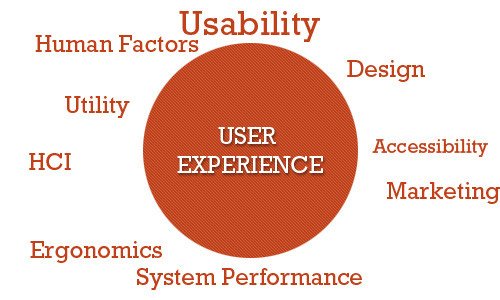
Surely you have heard the term “library UX” or have seen the letters “UX” during your professional reading or Internet browsing. You probably know that UX stands for “user experience”. But what does it actually mean?
Many think library UX applies only to the online library experience. Even if we assume that is true, a library UI is not the same as library UX. The online library experience goes beyond just the user interface. The complete library UX encompasses both the real-world and online library experiences.
According to Jakob Nielsen and Don Norman, the user experience “encompasses all aspects of the end-user’s interaction with the company, its services, and its products.”:
The first requirement for an exemplary user experience is to meet the exact needs of the customer, without fuss or bother. Next comes simplicity and elegance that produce products that are a joy to own, a joy to use. True user experience goes far beyond giving customers what they say they want, or providing checklist features. In order to achieve high-quality user experience in a company’s offerings there must be a seamless merging of the services of multiple disciplines, including engineering, marketing, graphical and industrial design, and interface design.
It’s important to distinguish the total user experience from the user interface (UI), even though the UI is obviously an extremely important part of the design. As an example, consider a website with movie reviews. Even if the UI for finding a film is perfect, the UX will be poor for a user who wants information about a small independent release if the underlying database only contains movies from the major studios.

Library UX is a hot topic at the moment, and rightfully so. In a sense, we always should have been focusing on the library user experience. Since it has been given a name—and a catchy abbreviation complete with a cool #LibraryUX hashtag—its importance as a discipline has grown.
The User Experience Librarian is new job title. Institutions such as the New York Public Library, Cambridge University, University of Arizona, and the University of Virginia have a dedicated User Experience Librarian. Here is a typical job description from a University of Michigan job posting:
Job Summary
The User Experience (UX) Department at the University of Michigan Library is seeking a talented and enthusiastic UX Designer. The ideal candidate will be able to create beautiful and usable interfaces, have a passion for understanding users, strong problem solving skills, and be invested in improving the library web experience. The UX Designer will focus on interface design but also take part in the full range of departmental duties, including user research/usability, accessibility, and web analytics. The UX Designer works in a collaborative team environment and participates in all stages of development – from concept to implementation.
Read the entire job posting to see the responsibilities and qualifications of their User Experience Designer.
The University of Virginia Library has a Library Experience department. From their Our Organization page:
What We Do: We strive to make the Library environment, both physical and virtual, pleasant, welcoming, and easy to navigate for all of our users. We also provide quality point-of-need information services. Our work includes:
- Connecting users with information and other resources in-person and virtually at their point-of-need
- Creating and maintaining a variety of beautiful, useful, and welcoming spaces
- Developing and maintaining our search technologies and infrastructures that allow researchers to find and access our materials online.
- Technologies include Virgo (online catalog), Libra (institutional repository), image viewers, specialized tools for making rare and unique materials accessible, etc.
- Researching and implementing emerging technologies
- Researching user needs and performing user testing on our virtual and physical systems
Here are a few UX resources to get you started.
- Article: “The User Experience Librarian” by Erin Dorney
- Book: User Experience (UX) Design for Libraries [preview]
- Journal: Weave: The Journal of Library User Experience (open access)
- Magazine: UX Magazine
- Blog: Designing Better Libraries
- Podcast: LibUX [Start with 021: The User Experience (Part One)]
- Chat: UX Twitter Chat #litaux (Fridays 2:00-3:00 pm EDT)
- Facebook: Design and UX for Libraries Group
- Twitter: Suzanne Chapman @LibraryUX
We’ll write more on specific UX topics in the near future.
